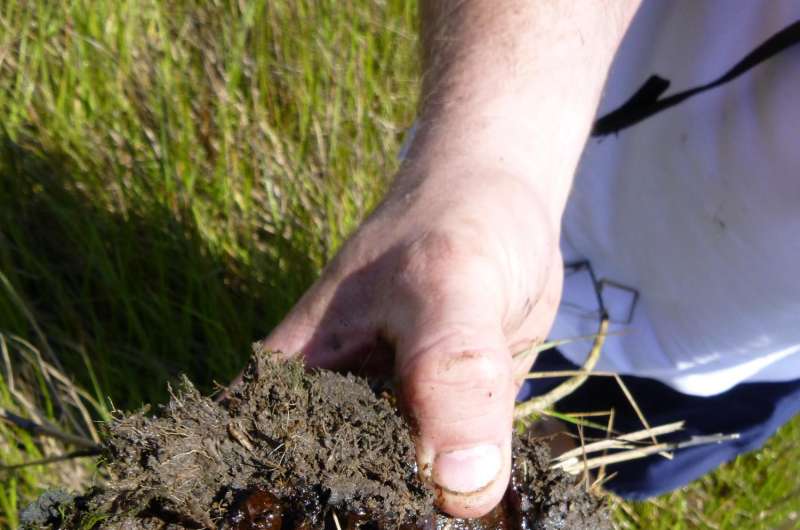Oil spill impacts in coastal wetland

Although evidence of the 2010 Deepwater Horizon oil spill may not be visually obvious today, crude oil can still be found in Louisiana coastal marshes. Oil not initially degraded has become buried under the yearly pile of dead plant material, which is deposited after each growing season. The oil has potential to cause stress to plants, as it is buried and in close proximity with the roots.
A paper recently published in the Soil Science Society of America Journal investigates how the presence of surface and buried crude oil under flooded and drained conditions affects the redox of wetland soils, an important control of wetland soil functions.
Researchers reported that reduction potential of the wetland soil was not significantly different under flooded conditions, mimicking high tide conditions. However, under drained conditions, similar to low tide, oil slowed the transport of oxygen into the root zone. This delay in oxygen availability caused by oil can increase stress on wetland plants, unable to supply enough oxygen to their root system. This stress can contribute to accelerated loss of marsh area through erosion in a region where marshes are already rapidly disappearing, due to high relative sea level rise.
More information: B.M. Levine et al, Crude Oil Effects on Redox Status of Salt Marsh Soil in Louisiana, Soil Science Society of America Journal (2017). DOI: 10.2136/sssaj2016.12.0398
Journal information: Soil Science Society of America Journal
Provided by American Society of Agronomy




















